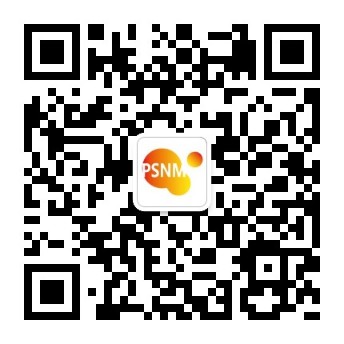Peshing Technology White Paper
The TC4, TA1 and other titanium alloy powders produced by Panxing New Metal have been stably supplied to downstream MIM titanium parts manufacturers, and have product applications in watch smart wear, 3C electronics, medical equipment, etc. In the future, Panxing will launch more diversified and low-cost titanium alloy powder types, and provide customers with efficient and integrated technical solutions with excellent and stable product quality.
The development history of MIM industry
MIM technology is an advanced forming technology that combines the advantages of powder metallurgy compression molding and plastic injection molding. The research and development began in 1973. Parmatech, a company established by Weich in the United States, was the first to engage in research and product development of MIM technology and was in its infancy. Until 1979, its products won two awards in the International Powder Metallurgy Conference Product Competition and emerged, which attracted the attention of the powder metallurgy industry, and then developed rapidly. With the development of the industrialization of the MIM industry in various countries, it has been widely used in many fields such as automobiles, electronic products, medical equipment, consumer goods, etc. Among them, the Asian market is mainly used in the electronic product industry, and the North American market is mainly used in medical equipment and light weapons. In other fields, the European market is more focused on the automotive and consumer goods industries.
As early as during the "Seventh Five-Year Plan" and "Eighth Five-Year Plan" period, my country included MIM technology in high-tech research to break the technological blockade of advanced international countries, and later increased research efforts in the "863" and "973" plans. In the late 1990s, an industrialized production line was gradually built and industrialized production began. In 2006, the German BASF feeding was effectively promoted in China, and the POM feeding system and degreasing technology developed rapidly, which brought great impetus to the domestic MIM industry. In 2011, the US Apple was willing to accept MIM technology and used MIM sintered parts in large quantities, and MIM technology reached a period of explosion. With the development of domestic industrial technology, new injection machines, green oxalic acid degreasing technology, and new wax-based feeding systems will drive the MIM industry to grow steadily with an annual growth rate of about 20%.
MIM Titanium Prospects
Titanium and titanium alloys are widely used in aerospace and medical equipment due to their high specific strength, high corrosion resistance and excellent biocompatibility. Limited performance due to poor performance. Metal Injection Molding (MIM) is a new type of near-net-shape technology, which is considered to be an ideal method for preparing titanium and titanium alloys because of its mass production of complex structures, high dimensions and high precision parts at low cost. processing technology. The current mainstream MIM titanium process is to mix titanium alloy metal powder and binder to obtain a uniform and stable feed, and then obtain a green body that meets the requirements through injection molding; The binder is removed, and finally the desired parts are obtained after sintering and post-processing.
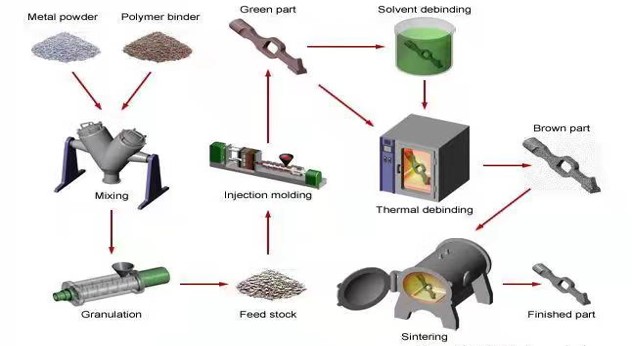
Figure 1 MIM process flow
According to the statistics of Huajing Industry Research Institute, the market analysis of my country's metal powder injection molding (MIM) industry in 2020, it is expected that the market share of the MIM industry will reach 12.19 billion yuan in 2025. Among them, MIM titanium and titanium alloy powder will have a blowout development and will It will be concentrated in the field of consumer electronics, and the proportion of mobile phones and their components will continue to increase.

Figure 2 2011-2025 my country's MIM industry market size and the proportion of MIM varieties in 2020
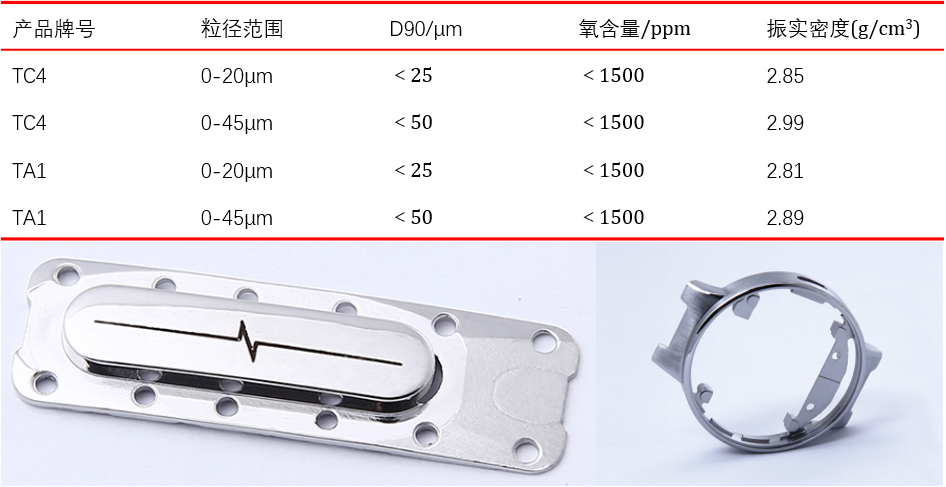
Figure 3 MIM-titanium alloy application
Technical Difficulties of MIM Titanium Alloy
At present, some progress has been made in the research of MIM titanium and titanium alloys, but there are still certain difficulties in large-scale industrial application, mainly in the following points:
1 Hypoxic spherical titanium and titanium alloy powder are expensive; although domestic spherical titanium and titanium alloy powder manufacturers have developed rapidly in recent years, there is still a certain gap between them and the world's leading technology.
2. Binder selection and degreasing removal process; the selection of binder determines the amount of powder filling, which has a direct impact on the density, shrinkage, and surface roughness of the sintered product, and an efficient degreasing removal process helps. Reduce the influence of impurity elements, such as C, O, and improve product performance.
3. Sintering process optimization and equipment requirements; due to the high activity of titanium alloys, the control of temperature and oxygen content during sintering is very important, and higher requirements are placed on the sintering furnace.
R&D and production of Panxing Power MIM titanium alloy powder
Peshing is committed to the R&D and production of new metal materials and spherical metal powders. It is a national high-tech enterprise with R&D as the orientation and precision manufacturing as the core.
In terms of powder business, Panxing New Metal currently has 10 vacuum air atomization production lines, with an annual output of more than 1,000 tons of high-quality powders such as titanium alloys and superalloys. The products are widely used in additive manufacturing, MIM, surface treatment and other fields. In 2020, Panxing New Metal began to focus on the development of MIM titanium alloys, and established a joint R&D center with well-known powder metallurgy universities such as Central South University to continue to break through the technical bottleneck of MIM titanium alloy powder.
So far, Panxing has developed 4 world advanced crucibleless electrode induction melting gas atomization (EIGA) production lines, with an annual output of about 200 tons of titanium alloy powder, which can repeatedly and stably produce high accumulation, low oxygen content, and high fluidity Titanium alloy spherical powder for MIM has passed the whole process verification of MIM, providing quality assurance for MIM sintered parts, and has met the needs of many precision machining suppliers for titanium alloy powder. Panxing New Metal mainly uses TC4 and TA1 gas atomized spherical powders of 0-20μm and 0-45μm (see Figure 3), and can be customized to produce MIM titanium alloy powders with special composition and particle size requirements. The relevant performance parameters are as follows shown in Table 1.
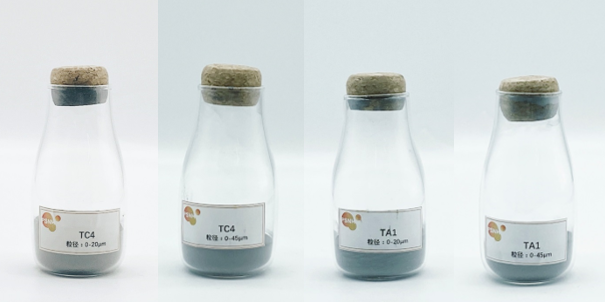
图4 盘星新金属生产MIM钛合金粉末

Table 1 Performance parameters of MIM titanium alloy powder produced by Panxing New Metal
At present, TC4, TA1 and other titanium alloy powders produced by Panxing New Metal have been stably supplied to downstream MIM titanium parts manufacturers, and have product applications in watch smart wear, 3C electronics, medical equipment, etc. In the future, Panxing will launch more diversified and low-cost titanium alloy powder types, provide customers with efficient and integrated technical solutions with excellent and stable product quality, and strive to become the "fixed plate" of the MIM titanium and titanium alloy powder industry. star".
references:
[1] Powder Network "Leading Enterprises Guiding the Way: How Can the Powder Metallurgy Industry Be Stable and Go Far?"
[2] China Economic Information Network "Market Status of China's Metal Powder Injection Molding (MIM) Industry in 2020"
[3] He Shiwen (He Shiwen), Ouyang Hongwu (Ouyang Hongwu), Liu Yong (Liu Yong), et al. New powder metallurgy technology for preparing titanium alloy parts [J]. Powder Metallurgy Industry, 2004 (2): 35-38.
[4] Guo Li, Zhan Hao, You Yuping, et al. Research progress on powder injection molding of titanium and titanium alloys [J]. Mechanical Engineering Materials, 2019, 42(6): 15-21, 86.
[5] EBEL T. Advances in the metal injection molding of titanium at Euro PM2014[J].PIM International,2015,9(1):51-61.
[6] VIRDHIANS, OSADA T, KANG H, et al. Evaluation and analysis of distortion of complex shaped Ti-6Al-4V compacts by metal injection molding process[J].Key Engineering Materials,2012,520:187-194.

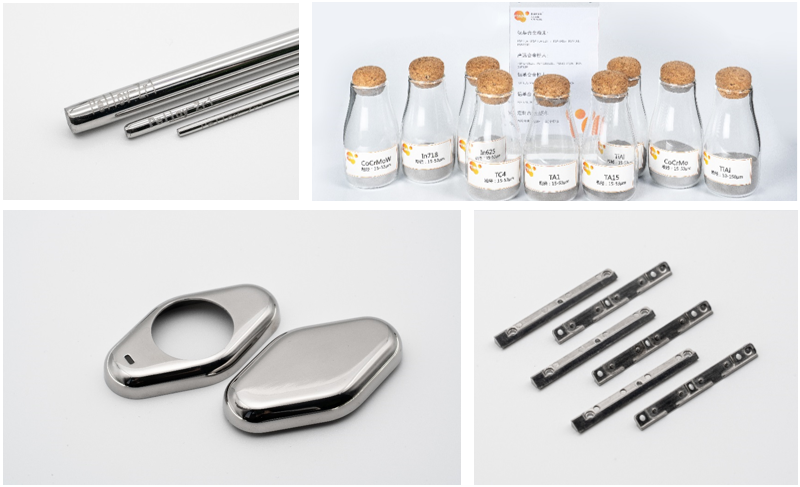
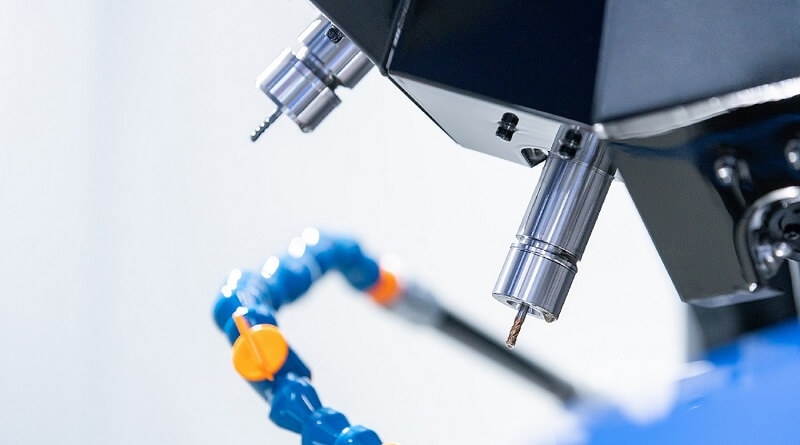

 CH
CH







